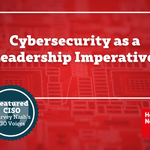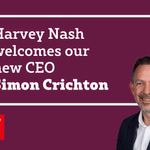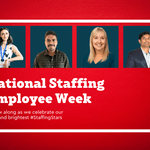Have you celebrated your employees lately? Here’s an interesting statistic: Companies that regularly recognize the efforts and successes of their employees report: Reduced turnover: 63% of employees whose work and talents are acknowledged say they’re unlikely to seek a new job Overall happier team members Higher performance, with 4 out of 5 employees sharing that being recognized for their results in higher productivity But here’s the thing that many companies aren’t getting quite right: Employee recognition is an art. There’s a process to genuinely demonstrate your appreciation. And it’s an everyday commitment rather than a rare occasion. Why Employee Recognition is Important There's a saying: "The greatest gift is the one that's given away." And perhaps nowhere is that more applicable than employee recognition. In the simplest terms, employee recognition just feels good. It feels good to uplift our coworkers and celebrate their achievements. And it's so easy. You don't even have to wait for an employee to achieve something outstanding. You can simply celebrate who they are, how they treat their colleagues and clients, their contribution to your company and its culture, and the energy they bring to the team. One of the best things about employee recognition is that it's a win-win. It benefits the recipient who naturally loves to feel "seen" in the workplace. And it benefits you as well because the more authentically positive feedback we give out, the better we feel in our own role. Maybe it sounds a bit corny. But it's actually a really big deal to establish a culture of collaboration, awareness and appreciation. However, while employee recognition can be very easy and rewarding, it needs to be baked into the way you interact with your team every day. Many businesses too often throw the usual means of recognition at their people without first creating a foundation of—and a lived commitment to—mutual respect and acknowledgment. Employee Recognition Comes ... Second? Not everyone sees employee recognition the same way. Sometimes the management team and their employees have very different perspectives on what it means to be truly recognized. The most popular forms of employee recognition may look a lot like the company happy hour or pizza party. They might include some sort of public or private call out, whether it’s via email, a message on an application like Slack, or during a team meeting. Maybe there’s even a certificate of achievement or a gift card involved. But for some employees, a pizza party or a gift card might land poorly, or even seem ingenuine. This is often because it feels like an empty gesture when the fundamentals of mutual care, feedback, and respect aren’t in place first. The First Step: Establish a Baseline of Respect Employee recognition can and should show up in how you interact with your team every day. Start by asking yourself these questions. Employee reviews: Do you conduct employee reviews to discuss where they’re doing well and where they have opportunities for growth? Are reviews scheduled regularly, or do they fall to the wayside due to poor planning or lacking prioritization? Do you share an agenda ahead of time? Are these conversations helpful and meaningful for your employees? Do they come away feeling inspired and encouraged, or confused and demoralized? Do you have a compensation policy? Do your employees know when they can expect a raise or a bonus? Do you regularly share performance metrics that have an impact on their compensation? Meetings and schedule: Do leaders arrive to meetings prepared and on time? Do they make an effort to wrap meetings up at the scheduled end time? Internal review structure: Does your company use a third-party application to request, process and deliver employee feedback with the option to remain anonymous? If so, how do you present that information? And importantly, how do you take action on the feedback you receive, and how do you take advantage of the company's opportunities to improve the employee experience? Employee recognition first means that you recognize that your employees are people with feelings. They deserve to have their time respected, to know what to expect in advance whenever possible, and to feel connected to the company’s goals and the positive impact they can have. Remember that clarity is kindness. These simple behaviors demonstrate your commitment to respecting your employees as people. Respect your employees’ time. This can be as simple as avoiding the rescheduling of important meetings, arriving at meetings on time whenever possible, and keeping the meeting prompt and on-topic so you can wrap up at the scheduled time. Managers can and should set an example for the whole organization around promptness and courtesy, knowing that perfection is not the goal. Feel free to acknowledge when circumstances out of your control cause you to run late/over time on a meeting. Acknowledge your employees’ work effort. Whether you increase your employees’ wages annually, via a bonus program or both, a clear policy and schedule around pay raises is perhaps the most meaningful step you can take to demonstrate your appreciation for their hard work. Consider recognizing not just results, but effort. Especially in technology-driven environments where innovation and experimentation are key, when someone takes a bold risk or tries something radically different—and everyone learns something from it—that’s a great opportunity for recognition. Ask for their opinion. Then, listen to understand first and respond second. Feedback should always be a two-way street. By investing time and thought in performance conversations, as well as listening to feedback and providing clarity about how you plan to address it, you’ll demonstrate that you value and respect your peoples’ perspectives on how the business and culture can improve. When an employee brings an issue to you, avoid trying to talk them out of why it’s an issue in the first place. This can be seen as gaslighting or “bright-siding,” and it’s not good for the relationship. Validate their point of view, do more listening than talking at first, and then respond thoughtfully and specifically. Get Employee Recognition Right and You’ll Win (and Keep) Top Talent Once you’ve implemented the behaviors above and are truly living your commitment to your employees, the pizza parties, gift cards, and certificates of achievement will be well-received. Remember that these are complements to your broader approach to employee recognition, not the centerpiece. And don’t forget to have fun in the process of helping your employees feel truly recognized, seen, heard, and valued. Get creative, walk in their shoes, and they’ll feel the love. As a longtime talent partner of choice for the information technology industry, trust us when we say what we’ve shared here, while seemingly simple, is the stuff of legendary workplaces that attract, hire and keep the best talent in the industry. Let’s talk about your employee recognition program. How can Harvey Nash USA help you create a winning recruiting strategy? Contact us today.
The Art (And Process) of Employee Recognition
You might also like
Get in touch
If you're looking to secure your next role or make your next best hire, we'd love to help. Get in touch to speak with one of our consultants today




